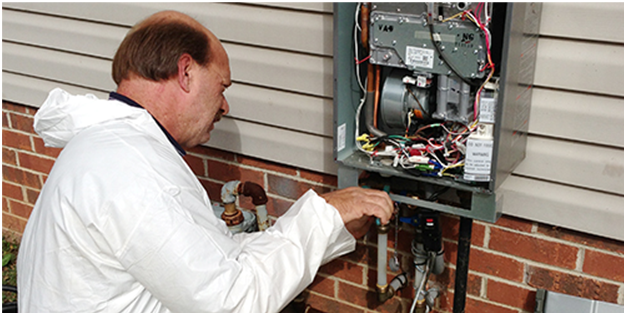The processs of tankless water heater is to heat water directly without the use of a storage tank. When a hot water tap is turned on, cold water travels through a pipe into the unit. Either a gas burner or an electric element heats the water. As a result, tankles water heater deliver a constant supply of hot water.
Tankless water heater can be devided in two types. Such as-
- Tankless Electric heater
- Gas fired tankless heater
Among them gas fired tankless water heater is more effective and provide heat to the water faster than the tankless electric heater. In case of installation electric heater are easier to install rather than gas fired tankless heater. But in case of size requirement , it’s basis on the use of the number of people. If the number of people is less like one or two then the electric tankless water heater will be best. In other case gas tankless water heater can be suggested.
Tankless water heater can be rated by the maximum temprature rise possible at a given flow rate. So, to select the right tankless water heater, the flow rate and temperature rise should be determine. For saving little money one should never undersizing the tankless water heater.
Considered Issues-
Buying the oversized or undersized tankless water heater it will bring unnecessary issues like- rising the opwrating cost, affecting budget and other things. For choosing the right one there are some issue that has to be considered. Such as-
- Category or size of the home and family
- How many bathrooms, tubs, dishwasher and washers are going to be used?
- Number of the kids and teenagers who will use hot water as per as their need.
- What is the pattern of the usage?
- Quintity and type of fixtures.
Calculate the Size of Tankless Water Heater-
Calculation of the size depends on the peak demand for hot water and also the number of devices of a house, that aer being used. Let the tannkless unit is to supply 1 shower and 2 sinks. If we assume that 1 shower will demand 2.5 gpm and for 1 sink 0.75 gpm. So, total peak demand is 4.00 gpm.
Whole house heater will usually supply 2 to 4 gpm at 75 F temperature rise. So one has to choose the tankless water heater model closest to the calculated flow rate and temperature rise needs.
GPM Heating Basis-
To determine the temperature there are some procedure. Determine required temperature rise. To determine temperature rise, subtract the incoming water temperature from the desired output temperature. Unless you know otherwise, assume that the incoming water temperature is 50°F (By using a low temperature assumption you ensure that you will not undersize your tankless unit. If you live in a warm climate your water temperature will likely be much higher.) For most uses, you’ll want your water heated to around 105–115°. In this example, you’d need a demand water heater that produces a temperature rise of 55°.
Determine Size-
Start with your incoming water temperature, and in this example it’s 50 F. Determine the maximum flow rate of gallons during use. For example, one person is taking a shower, which is 1.5 GPM, and the temperature desired is 105 F. One person is doing the dishes, which is 1.5 GPM and the temperature desired is 110 F. The washer is also running, which is 2 GPM, and an average washer temperature is 120 F. The total GPM for that time period is 5 GPM. Ideally, to maintain the water temperature required by all of these functions at the same time, your requirements are a tankless water heater that is capable of raising the temperature of the water 70 F at 5 GPM. Most gas-fired water heaters are capable of doing this. However, they are rated at a specific temperature rise over a maximum amount of GPM. For example, a 200,000 BTU gas-fired tankless unit is able to raise the total water temperature 50 F at a maximum of 7.4 GPM. As a basic rule of thumb, each GPM subtracted from the total allows a 10-degree increase in water temperature. In this scenario, a 200,000 BTU water heater would be able to heat all of the water in a house at a 6.4 GPM flow rate to 110 F, and at a 5.4 GPM flow rate, all the flowing water would be heated to 120 F. Since only the washer needs this temperature, a 200,000 BTU tankless water heater in this simulation is considered overkill.

